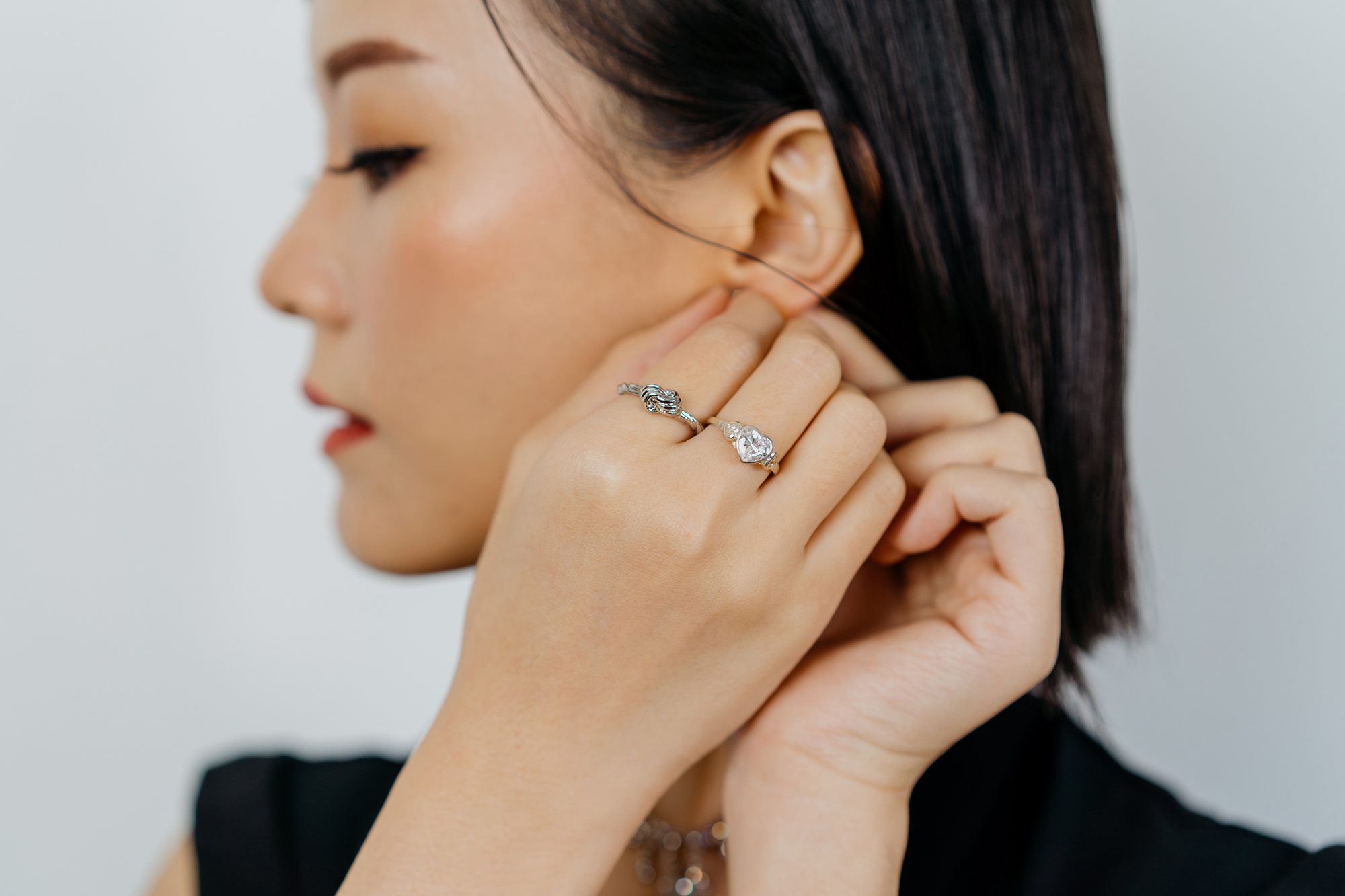18ct White Gold: The Elegant Choice for Fine Jewelry


When it comes to selecting the perfect metal for your jewelry, 18ct white gold stands out as a timeless and elegant choice. Whether you’re considering an engagement ring, wedding band, or a stunning necklace, the allure of white gold is undeniable. In this comprehensive guide, we’ll delve into the intricacies of 18ct white gold, exploring its composition, properties, advantages, and more.
What is 18ct White Gold?
18ct white gold is a precious metal alloy renowned for its brilliant white hue and exceptional durability. Unlike pure gold, which is naturally yellow, white gold is achieved by mixing pure gold with white metals such as nickel, palladium, or silver. The term “18ct” denotes its gold purity, indicating that it contains 75% pure gold and 25% other metals.
Composition of 18ct White Gold
To understand the composition of 18ct white gold, it’s essential to grasp the concept of gold purity and alloys. Pure gold is too soft to be used in jewelry on its own, so it is often alloyed with other metals to enhance its strength and durability. In the case of 18ct white gold, the addition of metals such as palladium or silver creates a sturdy alloy suitable for crafting exquisite jewelry pieces.
Properties of 18ct White Gold
One of the key attributes of 18ct white gold is its remarkable durability and strength. Unlike other white metals like silver, 18ct white gold is resistant to tarnishing and corrosion, making it an ideal choice for everyday wear. Additionally, it boasts hypoallergenic properties, making it suitable for individuals with sensitive skin.
Advantages of 18ct White Gold
The allure of 18ct white gold extends beyond its aesthetic appeal. One of its primary advantages is its affordability compared to platinum, another popular precious metal. While platinum commands a higher price due to its rarity and density, 18ct white gold offers a more budget-friendly alternative without compromising on elegance or quality. Furthermore, its versatility in jewelry design allows for endless creativity and customization options.
Disadvantages of 18ct White Gold
Despite its numerous benefits, 18ct white gold is not without its drawbacks. One notable disadvantage is its susceptibility to scratching, especially when compared to harder metals like platinum. Additionally, 18ct white gold jewelry requires periodic rhodium plating to maintain its bright white appearance, adding to the overall maintenance costs.
Comparison with Other Metals
When choosing the perfect metal for your jewelry, it’s essential to consider how 18ct white gold stacks up against other options. While platinum shares similar characteristics with 18ct white gold, such as durability and hypoallergenic properties, it comes with a heftier price tag. On the other hand, silver, while more affordable, lacks the durability and longevity of 18ct white gold. Additionally, 18ct white gold shares similarities with its 14ct counterpart, with the primary difference lying in gold purity.
How to Care for 18ct White Gold Jewelry
To ensure your 18ct white gold jewelry maintains its luster and beauty for years to come, proper care and maintenance are essential. Regular cleaning with mild soap and warm water, followed by gentle polishing with a soft cloth, can help remove dirt and oils accumulated from daily wear. It’s also advisable to store your jewelry in a separate pouch or compartment to prevent scratches and damage.
Popular Uses of 18ct White Gold
The versatility of 18ct white gold makes it a popular choice for a wide range of jewelry pieces, including engagement rings, wedding bands, earrings, bracelets, and pendants. Its timeless elegance and understated sophistication add a touch of luxury to any ensemble, making it a staple in both traditional and contemporary jewelry designs.
Sustainability and Ethical Considerations
As consumers become increasingly conscious of the environmental, lab diamonds, and ethical implications of their purchases, the sourcing of gold has come under scrutiny. Responsible jewelers are committed to sourcing gold from reputable suppliers who adhere to stringent ethical and sustainability standards, ensuring minimal environmental impact and fair labor practices.
Customization and Personalization
One of the most appealing aspects of 18ct white gold jewelry is the ability to customize and personalize pieces to reflect your unique style and personality. From custom-made engagement rings crafted to your specifications to intricate engraving and stone settings, the possibilities are endless when it comes to creating a one-of-a-kind masterpiece.
Market Trends and Demand
In recent years, there has been a growing demand for 18ct white gold jewelry, driven by shifting consumer preferences towards modern and versatile designs. With its affordability, durability, and timeless appeal, 18ct white gold continues to captivate jewelry enthusiasts around the world, making it a cornerstone of the fine jewelry industry.
Recent Posts
Platinum or Gold Ring: Which Is the Best Choice for You
When it comes to choosing the perfect engagement ring or wedding band, one of the…
Blood Diamond? Understanding the Impact and Controversy
In the world of diamonds, few terms carry as much controversy and emotional weight as…
Toi et Moi Diamond Engagement Ring: A Unique Symbol of Love
With regards to picking an engagement ring, the Toi et Moi diamond engagement ring is…
The Secret Engagement Proposal: How to Create the Perfect Surprise
An engagement proposal is one of the most significant moments in a person’s life. It…
Lab Grown Diamond Stud Earrings: A Splendid Decision for Current Style
In the realm of fine gems, lab grown diamond stud earrings have arisen as a…
Understanding Diamond Cuts Types: A Comprehensive Guide
When it comes to choosing the perfect diamond, one of the most critical factors to…